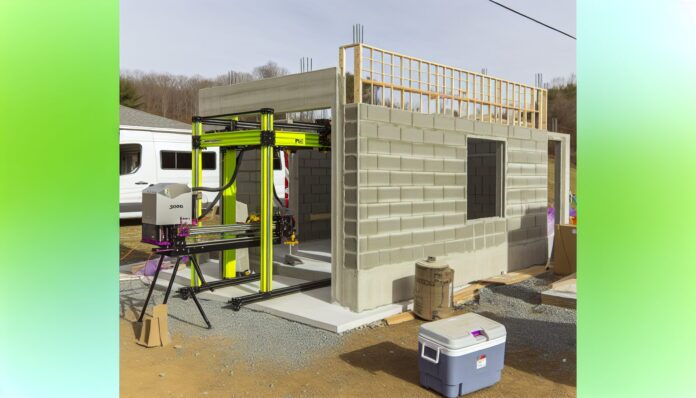Centre County, Pennsylvania, is making history with the construction of the state’s first 3D printed home. This innovative project, led by the nonprofit Housing Transitions and construction firm X-Hab 3D, aims to address the growing need for affordable housing using cutting-edge additive manufacturing technology.
3D Printing in Construction: A New Era for Housing
The 3D printed home is being built in State College, PA, and represents a significant milestone in the use of additive manufacturing for residential construction. Unlike traditional building methods, 3D printing allows for faster construction times, reduced labor costs, and minimal material waste. The process involves a large-scale 3D printer that extrudes a concrete-like material layer by layer to form the structure’s walls and foundation.
This project is a collaboration between Housing Transitions, a nonprofit organization focused on providing housing solutions, and X-Hab 3D, a company specializing in 3D printed construction. The home is designed to be both energy-efficient and cost-effective, making it an ideal model for future affordable housing developments.
Affordable Housing Through Additive Manufacturing
One of the primary goals of this initiative is to demonstrate how 3D printing can be used to create affordable housing in a sustainable and scalable way. The home will be approximately 1,000 square feet and include two bedrooms and one bathroom. It is expected to be completed in just a few months—significantly faster than traditional construction timelines.
By reducing the need for skilled labor and minimizing construction waste, 3D printed homes can be built at a fraction of the cost of conventional homes. This makes them an attractive option for communities facing housing shortages or looking to provide low-income families with safe, durable housing.
Technical Details and Construction Process
The construction process begins with a digital model of the home, which is then translated into instructions for the 3D printer. The printer, mounted on a gantry system, moves along a track to deposit layers of a proprietary concrete mixture. This material is engineered to cure quickly and provide structural integrity without the need for traditional framing.
Once the walls are printed, traditional construction methods are used to install the roof, windows, doors, and interior finishes. The hybrid approach allows for the benefits of 3D printing while maintaining the flexibility and familiarity of conventional building techniques.
According to X-Hab 3D, the material used in the printing process is not only strong and durable but also resistant to fire, pests, and extreme weather conditions. This makes 3D printed homes particularly well-suited for regions prone to natural disasters or harsh climates.
Broader Implications for the Housing Industry
The success of this project could pave the way for broader adoption of 3D printing in the construction industry. As housing costs continue to rise across the United States, innovative solutions like this are becoming increasingly important. By demonstrating the feasibility and benefits of 3D printed homes, the Centre County project could inspire similar initiatives in other parts of the country.
In addition to affordability, 3D printed homes offer environmental benefits. The precision of the printing process reduces material waste, and the use of sustainable building materials can further lower the carbon footprint of new construction. These advantages align with growing efforts to make the housing industry more eco-friendly and resilient.
Local officials and community members have expressed strong support for the project, viewing it as a potential model for future development. If successful, Housing Transitions and X-Hab 3D plan to expand their efforts and build more 3D printed homes throughout Pennsylvania and beyond.
As the first of its kind in the state, this 3D printed home is more than just a construction project—it’s a glimpse into the future of housing. With its promise of affordability, sustainability, and speed, additive manufacturing is poised to revolutionize how we build homes in the years to come.
Source: WTAJ

